Parasphaerichthys ocellatus
Eyespot Gourami
Etymology
Parasphaerichthys: from the Latin para, meaning ‘beside’, and the generic name Osphromenus.
ocellatus: from the Latin ocellatus, meaning ‘having a small eye’, in reference to the midlateral blotch on each side of the body.
Classification
Order: Perciformes Family: Osphronemidae
Distribution
To date the species is known mostly from the upper Ayeyarwady River basin in northern Myanmar where it’s been collected close to the city of Myitkyina in Kachin State as well as around nearby Lake Indawgyi, the largest inland lake in Southeast Asia and home to ten globally threatened bird species.
The lake and surrounding area were designated a protected zone by the Ministry of Ecotourism in 1999 and now form the Indawgyi Lake Wildlife Sanctuary.
Kachin State itself is one of the world’s great biodiversity hotspots and contains many endemic species although large portions of the area have been decimated due to illegal logging by both Myanmar and neighbouring China.
In 1983 a single adult female specimen was purchased from a market in the city of Mandalay, several hundred kilometres further south and also located within the Ayeyarwady drainage, meaning the full extent of its range remains unknown but may comprise much of the upper-to-middle Ayeyarwaddy.
Type locality is given as ‘Muddy stream along Kamaing Jade Mines Road, Kamaing, Myitkyina District, Upper Myanmar’.
Habitat
The type series was collected from ‘small, muddy streams’ but little additional information exists.
Presumably it spends much of its time among submerged or marginal vegetation and prefers slow-moving or standing water.
Maximum Standard Length
The largest officially-recorded specimen measured 32 mm.
Aquarium SizeTop ↑
An aquarium with base dimensions of 45 ∗ 30 cm or more is large enough to house a group.
Maintenance
Fares best in a well-planted set-up with a soft substrate although fine-grade gravel is acceptable.
Driftwood roots or branches, floating plants and leaf litter can all be added to lend a more natural feel and further increase structural complexity while also serving to diffuse the light entering the tank, while lengths of suitably-sized plastic piping or empty camera film container can also provide useful refuges.
It naturally inhabits sluggish or still environments therefore filtration, or at least water flow, should not be very strong, and if using leaves and wood do not allow the water to become tannin-stained as this species naturally inhabits clear water.
Water Conditions
Temperature: This species is subject to seasonal temperature fluctuations in nature and is comfortable between 15 – 25 °C with even greater extremes being tolerated for short periods.
pH: 6.5 – 7.5
Hardness: 90 – 179 ppm
Diet
Chiefly a micropredator feeding on small aquatic crustaceans, worms, insect larvae and other zooplankton.
It can be a little picky in the aquarium and initially may not accept dried or otherwise prepared foods, though in some cases will learn to take them over time.
It should be offered daily meals of small live or frozen fare such as Artemia nauplii, Daphnia, grindal worm, micro worm, etc., in order to develop ideal colour and conditioning.
Behaviour and CompatibilityTop ↑
Given its rarity in the hobby, and possibly nature, the emphasis should be on captive reproduction but if you intend to house it in a community tankmates must be chosen with care.
It’s slow-moving with a retiring nature and will easily be intimidated or outcompeted for food by larger or more boisterous tankmates.
Peaceful, pelagic cyprinids such as Danionella, Microdevario, smaller Rasbora species, or diminutive loaches such as some members of the genus Yunnanilus may constitute the best choices.
Though not gregarious in the sense of schooling or shoaling it does seem to require interaction with conspecifics and displays more interesting behaviour when maintained in numbers, meaning the purchase of no less than 6 individuals is recommended.
Sexual Dimorphism
Fully-grown females are noticeably larger than males and thicker-bodied when full of eggs.
Reproduction
SF member Frank Strozyk has bred P. ocellatus and may have been the first to do so.
He achieved success by maintaining a pair alone in a small aquarium of which the water surface was almost entirely-covered with pieces of floating cork bark and plastic camera film containers.
Eggs were deposited in a bubble nest within a film container, and a couple of days prior to this the pair could be seen exhibiting a highly-contrasted, black-and-white colour pattern.
The male was responsible for guarding the nest directly while the female patrolled the surrounding area.
The incubation period was between 3-5 days and it appears that this species spawns repeatedly over a period of several days, as additional eggs were observed in the original nest on a daily basis, and eventually a second, smaller nest was constructed.
No courtship was observed after the initial spawn, however.
Although a number of fry hatched and started feeding on Paramecium after 3-4 days, none were raised beyond this initial stage.
Thanks to Frank Strozyk.
NotesTop ↑
Like its congener P. lineatus this species is sometimes traded under the names ‘mini chocolate gourami’ or ‘Burmese chocolate gourami’, these two comprising the only members of the genus known at present.
P. ocellatus can be told apart from P. lineatus via the following combination of characters: larger body size (maximum standard length 32.0 mm vs. 18.7 mm); presence of ocellus–type marking in middle of each flank (vs. absencee); absence of dark, mid-lateral stripe (vs. presence); 11-16 anal-fin spines (vs. 8-10).
The two species also differ in some osteological characters.
The genus itself is separated from all other anabantoids by a couple of internal morphological characters, namely a reduced number of vertebrae (25-26, the lowest among the suborder Anabantoidei) plus the fact that Baudelot’s ligament originates from a transversely-orientated process on the first vertebrae close to the joint formed by the first intermuscular bone and the base of the neural arch.
Note: Baudelot’s ligament helps anchor the pectoral girdles to the sides of the fish.
Parasphaerichthys species are often grouped within the Osphronemid subfamily Luciocephalinae along with the genera Trichogaster, Trichopodus, Luciocephalus, Sphaerichthys and Ctenops.
They share with the latter trio an egg structure that is unique among teleosts; the distinguishing factor consisting of a series of spiralling ridges on the outer surface.
This has given rise to the (as yet unproven) theory that the four genera form a monophyletic group, i.e., they share a common genetic ancestor.
In Luciocephalus and Sphaerichthys the eggs are also distinctively pear-shaped suggesting that these two share even closer genetic roots.
Like others in the suborder Anabantoidei this species possesses an accessory breathing organ known as the labyrinth organ.
So-called due to its maze-like structure this organ allows the fish to breathe atmospheric air to a certain extent.
It is formed by a modification of the first gill arch and consists of many highly vascularised, folded flaps of skin.
The structure of the organ varies in complexity between species tending to be more well-developed in those inhabiting particularly oxygen-deprived conditions.
Similarly, while most can be observed taking regular gulps of air from the surface others, including Parasphaerichthys spp., do so less often.
References
- Prashad, B. and D. D. Mukerji, 1929 - Records of the Indian Museum (Calcutta) 31(3): 161-223
The fish of the Indawgyi Lake and the streams of the Myitkyina District (Upper Burma). - Britz, R. and M. Kottelat, 2002 - Ichthyological Exploration of Freshwaters 13(3): 243-250
Parasphaerichthys lineatus, a new species of labyrinth fish from southern Myanmar (Teleostei: Osphronemidae). - Britz, R., M. Kokoscha, and R. Riehl, 1995 - Japanese Journal of Ichthyology 42(1): 71-79
The anabantoid genera Ctenops, Luciocephalus, Parasphaerichthys and Sphaerichthys as a monophyletic group: evidence from egg surface structure and reproductive behaviour. - Freyhof, J., 2002 - DATZ 2002(4): 11-13
Ein ganz anderer Schokoladen-Gurami.

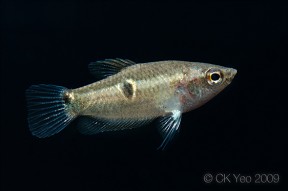
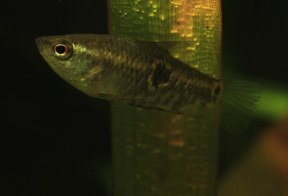
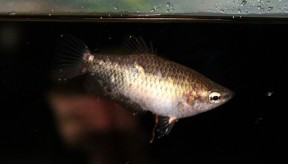
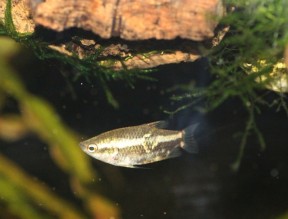
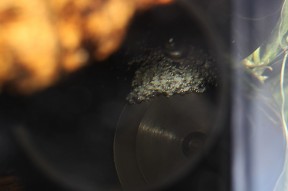
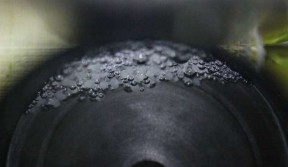
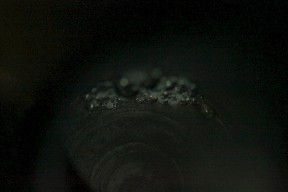
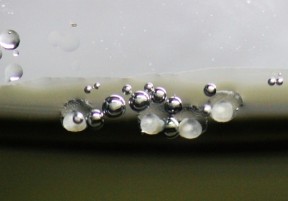
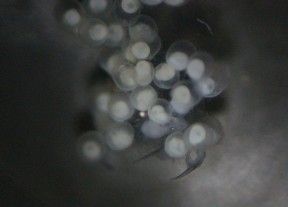
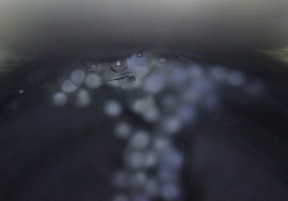
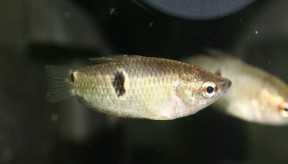
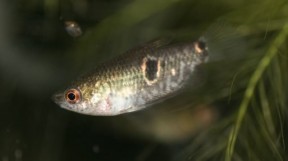
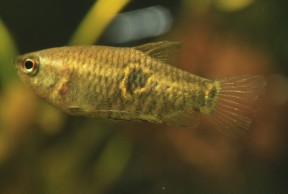

July 3rd, 2020 at 5:50 pm
I recently got my hands on a group of these guys and they are very social fish. It is also worth noting that they will establish a pecking order from what I found, they recently have begun the act of sizing each other up, pecking at the flanks and chasing.